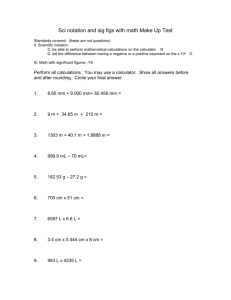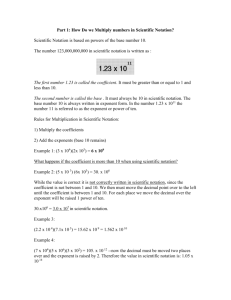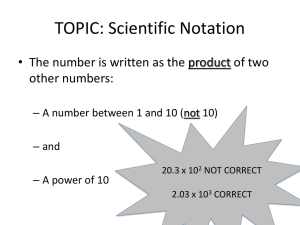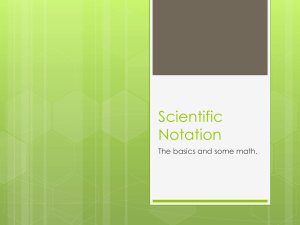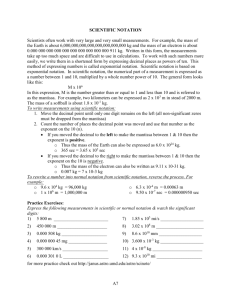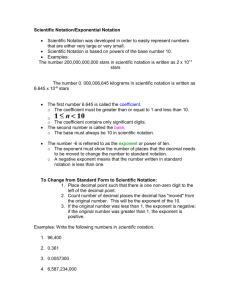Scientific Notation
advertisement
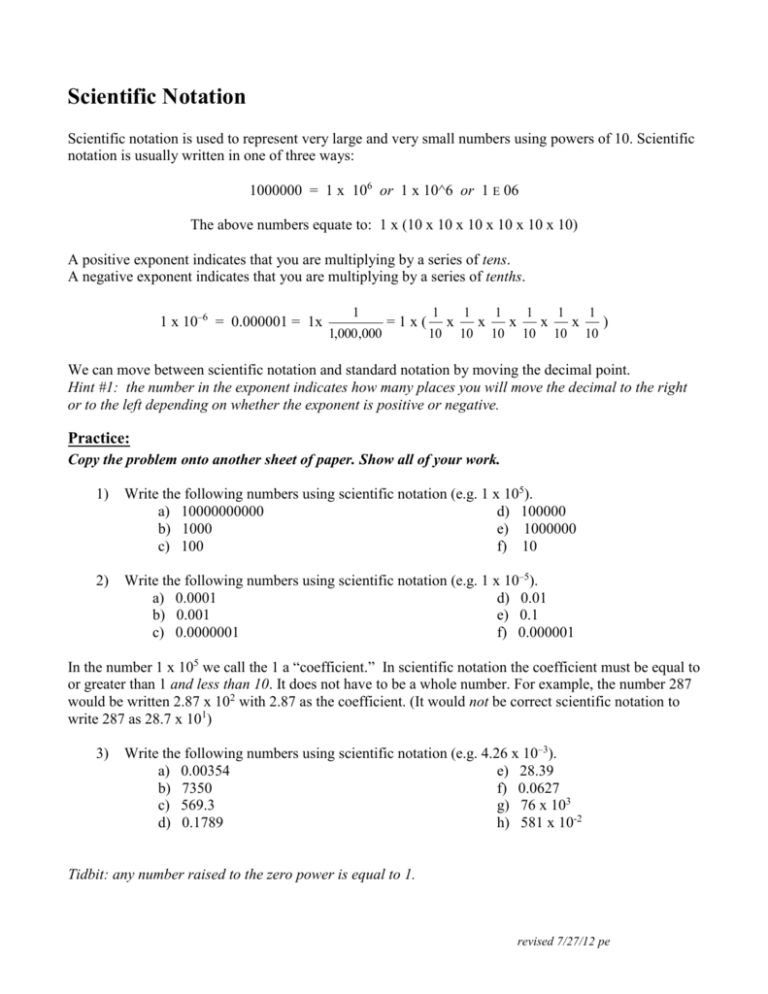
Scientific Notation Scientific notation is used to represent very large and very small numbers using powers of 10. Scientific notation is usually written in one of three ways: 1000000 = 1 x 106 or 1 x 10^6 or 1 E 06 The above numbers equate to: 1 x (10 x 10 x 10 x 10 x 10 x 10) A positive exponent indicates that you are multiplying by a series of tens. A negative exponent indicates that you are multiplying by a series of tenths. 1 x 10–6 = 0.000001 = 1x 1 1,000 ,000 =1x( 1 10 x 1 10 x 1 10 x 1 10 x 1 10 x 1 10 ) We can move between scientific notation and standard notation by moving the decimal point. Hint #1: the number in the exponent indicates how many places you will move the decimal to the right or to the left depending on whether the exponent is positive or negative. Practice: Copy the problem onto another sheet of paper. Show all of your work. 1) Write the following numbers using scientific notation (e.g. 1 x 105). a) 10000000000 d) 100000 b) 1000 e) 1000000 c) 100 f) 10 2) Write the following numbers using scientific notation (e.g. 1 x 10–5). a) 0.0001 d) 0.01 b) 0.001 e) 0.1 c) 0.0000001 f) 0.000001 In the number 1 x 105 we call the 1 a “coefficient.” In scientific notation the coefficient must be equal to or greater than 1 and less than 10. It does not have to be a whole number. For example, the number 287 would be written 2.87 x 102 with 2.87 as the coefficient. (It would not be correct scientific notation to write 287 as 28.7 x 101) 3) Write the following numbers using scientific notation (e.g. 4.26 x 10–3). a) 0.00354 e) 28.39 b) 7350 f) 0.0627 c) 569.3 g) 76 x 103 d) 0.1789 h) 581 x 10-2 Tidbit: any number raised to the zero power is equal to 1. revised 7/27/12 pe


